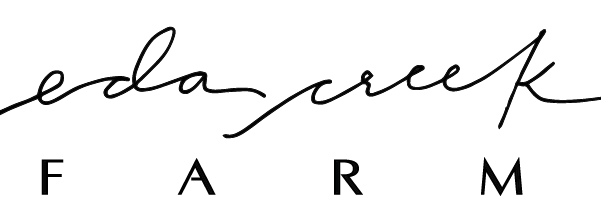The Magic of Foliar Spray
For the last two seasons, I have not sprayed any pesticides, organic or not, at the farm. Much of that is due to the beneficial insects we use (another topic for another day) but it is also because of the foliar spray the plant babies receive. A weekly foliar spray, full of nutrients, bacteria, plant hormones, minerals and pre-biotics delivers exactly what a plant needs and wants in an easily accessible format - the leaves absorb all the goodness through their epidermis and into the vascular system.
When I started doing a foliar spray it was just fish fertilizer and maybe some seaweed extract if I was feeling fancy, but it has evolved into a pretty set recipe. This is not everything I have ever used in my spray but it is what I am using right now and a good place to get started. It is also not the “best” recipe - there are growers using only compost tea or a myriad of other inputs and finding great success. As always, do what works for you and your growing space.
Fertilizer…nothing crazy here, just some good ol’ fashioned rotten fish juice. My mom used the same stuff in the ‘80’s and, while, I’ve changed brands, it still has that same, nostalgic grody smell. Sometimes I switch it up for a NPK balance that better fits the growing stage (i.e. more phosphorous for bloom time) but mainly I just pour in a couple glugs and call it good.
Jadam Liquid Fertilizer (JLF) … this one is from the Jadam school of growing and is incredible stuff - it’s free, loaded with plant-available nutrients, hormones and minerals, and smells worst than anything else on the farm, except maybe the pig bathroom. It is an anaerobic fermentation of plant matter, so imagine manure without the animal and you’ll get a sense. Be brave, and you will be rewarded with really lovely homemade fertilizer. I’ve made it with comfrey, fresh grass, chrysanthemum plants and this year I am using a batch made from last year’s marigolds. Rotten plant juice rules!
Seaweed extract…I’ve switched over to a powdered form I get from our local supplier (go visit Concentrates in Clackamas if you are local - they're the best) and while it does add another step in the process (you should dissolve it before adding to your tank), it is much more economical. I also use less then recommended (~2 tsp p/4 gallons).
Humic acid…this was a new introduction last year and still a little mysterious, but I am very pleased with the results. Use a VERY tiny amount, (I use even less than recommended - ½ tsp p/4 gallons) and premix with the seaweed extract. A foliar spray of humic acid helps with nutrient uptake, promotes beneficial bacteria on plant surfaces and overall plant health. It’s powerful stuff so go easy or it can cause damage.
OHN (Oriental Herbal Nutrient) - OHN is a fermented blend of edible aromatics that was developed by Master Cho, the founder of Korean Natural Farming (KNF). It contains garlic, ginger, cinnamon, angelica root and licorice. This stuff is special and I’ll tell you all about making it on another day (because goddamn it is a process) but I believe this is a key ingredient to reduced pest pressure and improved plant health. It is applied in miniscule amounts (1:1000, or 5 ml per gallon) but it’s very powerful and very smelly (are you starting to catch how odoriferous this process is?). I may have some to sell in the future so let me know if you’re interested!
Water-soluble Calcium (WCA) or Water-soluble Calicium Phosphate (WS-CaPo) - another KNF input but much easier to make than OHN. It’s a fun activity with kids, and yes, also quite stinky. Calcium is critical to plant growth and structure and a little of this business (1:1000 or 5 ml p/gallon) contributes to strong stems and robust blooms.
Additional inputs, depending on the season - a little preventative boost can be helpful at certain times of year. Right now I’m using an organic anti-fungal in the greenhouses to keep the nasties at bay, and later in the spring I’ll probably use Botanigard, a biofungicide, to get on top of any cool-weather aphids the beneficials miss
I didn’t come up with all of this on my own - it has all been done before and there are so many people doing an incredible job of sharing resources and knowledge. Much of it comes out of the Korean Natural Farming (KNF) and Jadam approaches to agriculture. I highly recommend delving deeper into both KNF and Jadam if you have not already - it is an indigenous, place-based, and economically sustainable approach to agriculture that can be applied to any sized growing space. It shifted my perspective on farm inputs and helped make me a better grower. There are various KNF and Jadam resources on the web, but Chris Trump, NaturalFarmingHawaii.net and the University of Hawaii have helped me understand and recreate inputs. I am also super appreciative to Bare Mountain Farms (their YouTube channel is awesome), Jennie Love at Love n’ Fresh Flowers and the No-Till Flower Farmers podcast, and all of Jeff Lowenfels books. These folks are taking the time to share information to make us all better, better growers and better stewards of our land and all the life it holds.
Next up, I’ll share some tips for setting up a spray program that is actually achievable and sustainable and doesn’t leave you buried in the weeds. Let me know your questions or comments below!


